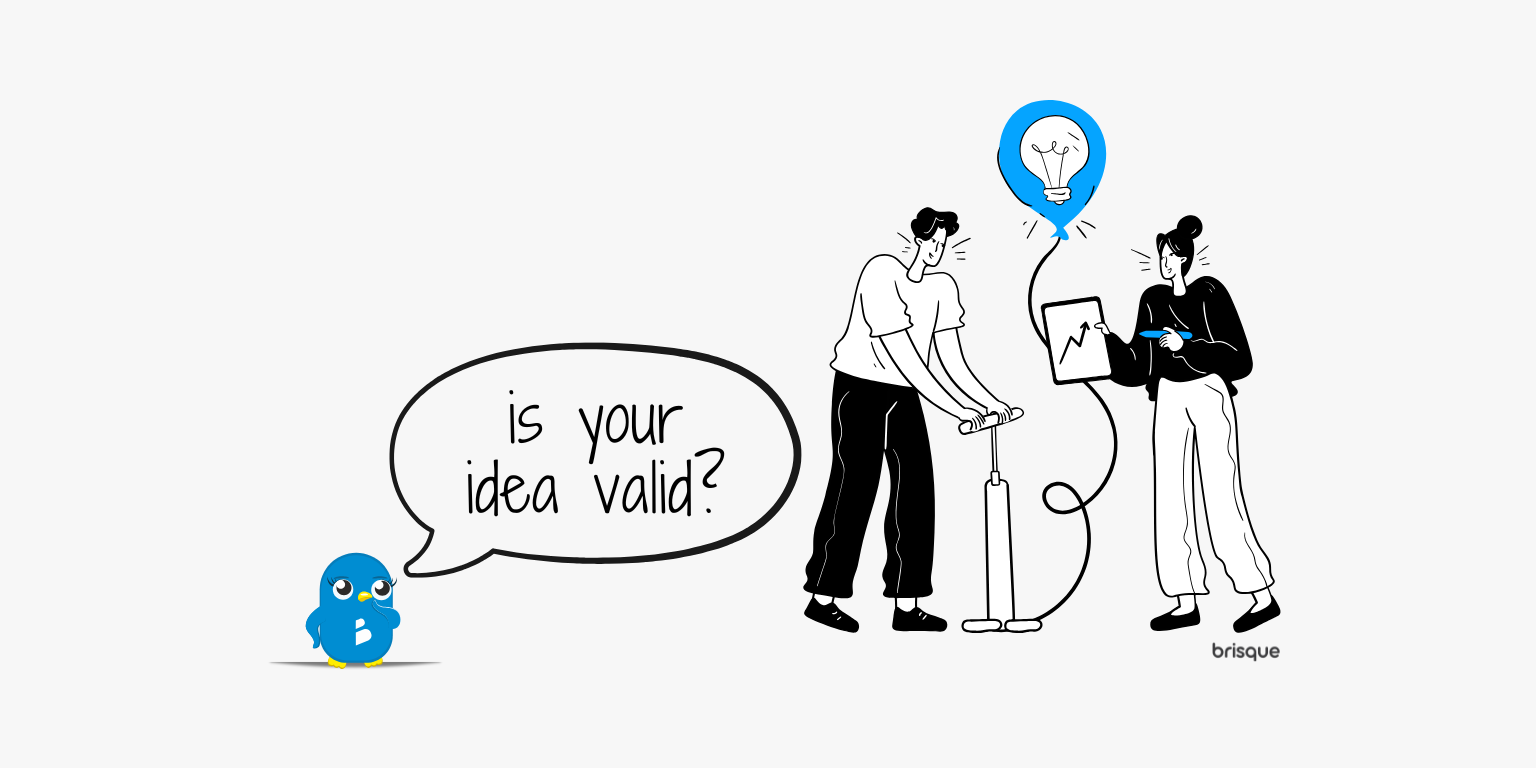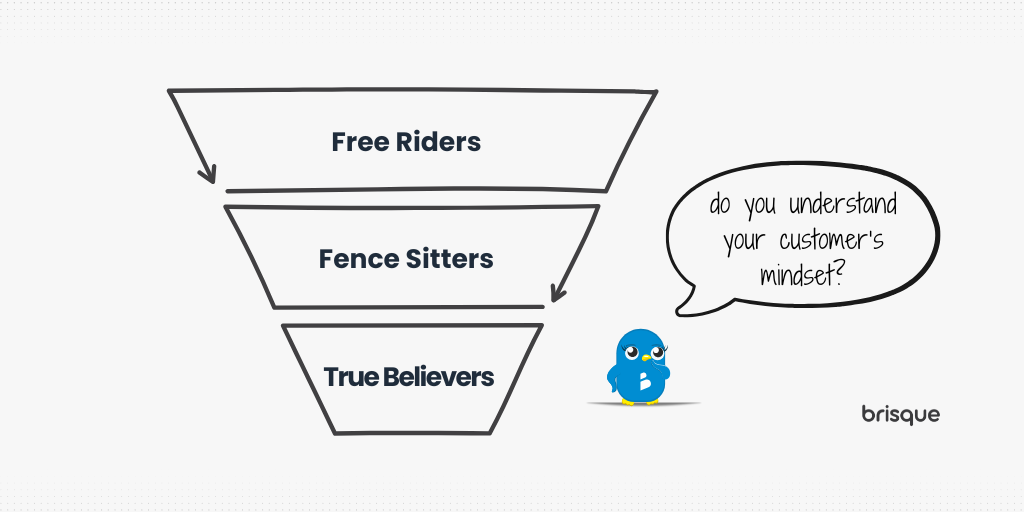Why Traditional Validation Falls Short
If you’re in the early stages of testing your idea, the goal isn’t growth. It’s learning. Traditional product validation often relies on surveys and interviews. They are excellent at helping you identify what people find interesting, but they rarely reveal what they will actually do. Someone can love your idea in theory, yet hesitate when it’s time to take action.
The truth is, interest isn’t a form of validation. Action is. That’s why effective idea validation focuses on observable behavior: clicks, sign-ups, payments, or engagement patterns. These signals show intent.
I’ve put together the methods below to help you discover how people genuinely respond to your concept before you invest time or money in building it.
1. Test Your Brand Message
Before testing your product, test your messaging. Why? Because if your message doesn’t resonate, even with a complete product, you might have a hard time attracting the right audience. Testing your message also gives you a chance to fine-tune your pitch before you build a product, and it increases your chances of achieving product-market fit post-launch.
To test a message, try creating a couple of ad versions that target different motivations or pain points. For example:
- Ad A: “Enjoy more free time by using our efficient scheduling tool.”
- Ad B: “Never miss an appointment—stay organized with our easy-to-use calendar.”
Show these ads to small, targeted groups and see which ones get more clicks, saves, or sign-ups. The one that performs best reveals what your audience cares about most.
Hellen’s Pro Tip:
Avoid shock value. Keep each message believable and aligned with your actual value proposition.
2. Run a Fake Door Test
The “fake door” test helps you gauge interest before you build.
Create a button, page, or feature card for something that doesn’t exist yet. Track how many people click or attempt to access it. That click is a behavioral yes.
How to run a fake door test:
Here’s an example: If you are thinking about investing in an industry report as a lead generation tool, you can add a “Request AI Report” button to relevant sections on your website, even if you haven’t created the report yet.
Tracking tools: Use click-tracking tools such as Hotjar, Google Tag Manager, Microsoft Clarity, and Fathom Analytics.
Hellen’s Pro Tip:
Once you confirm interest, invite those who clicked to join a waiting list. This keeps your validation loop moving forward. Remember: interest first, effort to build later.
3. Create an Unfinished Version on Purpose
Perfection hides problems. When you share a basic version — whether a simple wireframe or a clickable mock-up — users focus on functionality rather than design. Early prototypes are a learning tool, not a sales pitch. Don’t polish too soon.
Why it works: Low-fidelity prototypes tend to generate more actionable feedback than polished designs, because users focus more on functionality than on aesthetics.
Hellen’s Pro Tip:
Don’t apologize for an unfinished product. Frame your product as an “early access experience.” People enjoy being part of something still in progress, especially if it’s exclusive to a limited number of people.
4. Offer the Outcome Manually
Before investing in automation or software, prove that the results matter enough for people to pay for them. You’ll see firsthand whether people care enough to pay.
For example:
- If your idea is an AI résumé builder, offer personalized résumé rewriting services to 3–5 clients. Through that process, learn what matters to customers, what they are missing, and why your solution could improve their lives.
- If you’re planning a meal-prep app, start by prepping meals for a few local customers manually.
If you can find even a handful of people willing to pay for the manual version, you’ve validated that your outcome, not your technology, has demand.
Hellen’s Pro Tip:
Lack of product-market fit is a significant factor in startup failure. Manual validation helps you refine your process and enhance how you develop your final product, turning every client interaction into valuable product research.
5. Test the Problem, Not the Product
Most product validations fail because we test solutions instead of problems. Often, we get ahead of ourselves, start building a product, and then ask if people would be willing to use it. Instead of focusing on the solution that we’d like to create, it’s essential that we first confirm that the pain point we are looking to solve is real and strong enough to act on.
Here’s how to test the problem:
- Post about the problem your idea solves on platforms like LinkedIn, Reddit, or in relevant Facebook groups — without mentioning your product.
- Use phrasing that reflects a real frustration:
“Does anyone else waste hours trying to organize invoices across multiple clients?”
- Watch for comments, tags, and emotional responses.
If people engage, share, or debate the issue, you’ve confirmed there’s real energy behind the problem. You want to use the responses as an early gauge for how to frame your problem-solution narrative.
Here’s an example: When Buffer was still just an idea, the founder posted on Twitter about struggling to schedule tweets effectively. The feedback and engagement led to building the Minimum Viable Product, not the other way around.
Hellen’s Pro Tip:
Rather than asking people if they would use the solution you are developing, observe whether you need to persuade people that they have a problem. If you have to convince people that they have a problem, you’re probably addressing the wrong one.
6. Pitch Your Idea to a Skeptic (Not a Fan)
Friends, family, and supportive peers mean well, but their approval can give a false sense of validation.
Instead, seek out people who don’t know you personally and pitch your idea to them. When you present your concept to someone likely to question it, such as an industry peer, investor, or experienced founder, you get the chance to do the following:
- Anticipate possible objections that arise as you bring your solution to market and prepare solutions or ready answers to explain your reasoning.
- It provides you with a perspective on your product or service that you might not have considered before.
- It forces you to take a closer look at what you are building to identify how you can genuinely improve and offer more value to your potential consumers.
It’s important to remember that behind every successful product launch is a long list of “no’s.”
Here are some real-life examples of business ideas that got a no:
Canva: Canva faced early investor skepticism about whether designers would use a browser-based platform. However, Canva was a billion-dollar idea.
Airbnb: Airbnb’s founders pitched dozens of skeptical investors who dismissed the idea as ridiculous. But the questions those investors asked (“What happens if guests damage property?”) shaped the trust mechanisms that later made Airbnb a success. Today, Airbnb has built-in protective mechanisms to protect both hosts and guests, which has helped enhance the platform’s trustworthiness.
Hellen’s Pro Tip:
There’s a caveat to pitching to skeptics: be in the right frame of mind. If not, the experience can be demoralizing and hinder your ability to achieve your product development goals.
Always ensure that you are very clear on your why and how you plan to reach your set goals. Having this clarity will help you better accept criticism as a tool for improving your original concept, rather than seeing it as an outright dismissal of your idea.
Each “no” helps you refine your story until you find the audience that finally says yes.
7. Watch Real Behavior
Behavior beats prediction.
Instead of asking, “Would you use this?”, create something people can interact with: a demo video, a clickable prototype, or a landing page, and track what they do next. Do they sign up? Click? Share? Drop off?
When watching behavior, pay attention to:
- What people often get stuck on. Is there one thing that they keep asking for that the solution doesn’t have?
- Check for specific drop-off points in your customer flow journey. Each time a person visits, for example, your landing page but doesn’t take further action, pay attention to what they did before dropping off.
Dropbox famously validated its product this way. The founders created a 90-second explainer video before building the actual tool. Overnight, their waiting list grew from 5,000 to 75,000 sign-ups, which was a clear behavioral validation.
Hellen’s Pro Tip:
Record and review user sessions. Often, small behavioral patterns reveal what people value most, and it’s easy to miss on the spot sometimes.
Do you have the Evidence?
Idea validation isn’t about approval; it’s about evidence. It’s about getting proof that you are on the right path, or that there’s another way to go. If people engage, click, sign up, or pay, that’s validation. If they don’t, that’s valuable data too.
Each test moves you closer to understanding what your audience truly wants, not just what they say they want. The goal isn’t to guess right from the start. It’s about learning fast enough to build something packaged to fit your ideal market.
Read next:






